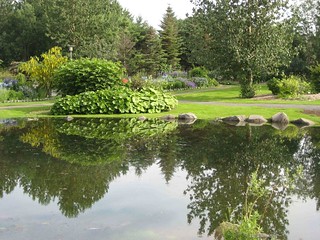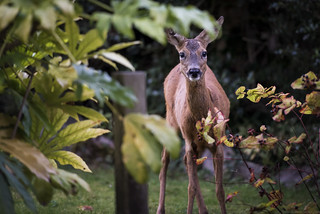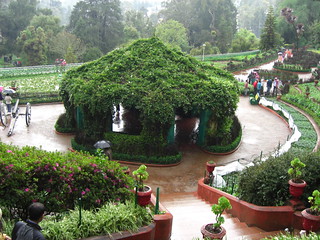Solid Advice On What Types Of Garden Soil To Use
There is no better time than now to get it started. You undoubtedly have numerous questions about how to begin and when to do what, but no worries, this article will address all of your gardening queries. The ideas and tips provided in this article will help you started and on your way to a successful garden.
Your plants will respond better to gradual changes in temperature or condition. Put them outdoors in the sun for no more than two hours the very first day. Over one week, increase the time outside slowly. By the weekend, your plants will be ready for their big move and should have no problems!
Choose perennials that slugs are not attracted to. Snails and slugs can do irreparable damage to your garden in a single night. Certain perennials that don’t have tough leaves are especially tasty to snails and slugs. Some perennials, however, leave a bad taste in slugs’ mouths or are difficult to chew through because their leaves aren’t tender. Several good choices include heuchera, campanula, achillea, and euphorbia.
Select plants that produce a higher profits and yield.
Brighten up your garden with annuals and annuals. You can fill any spaces between shrubs or perennials. Some flowers you can use are rudbekia, hollyhock, sunflower, rudbekcia, or sunflowers.
Use climbers to cover any fences or walls. Many climbers can cover the wall or fence in a single growing season. They can also grow through existing shrubs or trees, or can be easily taught to cover any size arbor. Some varieties of these plants will have to be tethered to some sort of support, but some will need to be trained or supported with ties. Some dependable types include honeysuckle, jasmine, wisteria, clematis, and climbing roses.
Don’t mow your grass too short. If you leave some of the grass when you mow, the roots grow further into the ground, which makes the grass less prone to drying and other hazards. Cutting your grass too short will cause it to dry out and turn brown in patches throughout your yard.
Plants all need a good supply of C02 to grow and thrive. Plants will not thrive in environments where high levels of CO2. A greenhouse is the best method of providing enough CO2 for your plants.
Be sure to get rid of the weeds growing in your efforts to banishing weeds!Weeds can take a promising garden to become overgrown and turn it into a shell of its potential. White vinegar is a natural herbicide. White vinegar will definitely kill weeds! If you’re annoyed with pulling up weeds manually, make a white vinegar solution and keep it handy for a quick spray when needed.
Moisture on your plants is an invitation to pests and disease. Fungi is a common in the plant world. It is possible to control fungi with sprays, but it’s better to spray at-risk areas before fungi appear.
Create your own garden from scratch with seeds, rather than plants. When opening a garden, the most green method of beginning is from seed. Many nurseries use plastic growing pots that are very seldom recycled. Try buying from organic nurseries and farms so your garden is not using anti-environmental products.
If your horticulture plans include pea plantings, begin the plantings inside instead of outside. The seeds will grow better germination rate if planted there first. The seedlings tend to be healthier, which means they can resist pests and diseases better. You can transplant the seedlings outdoors once they are able to survive and thrive.
Plant items with fall season color in mind. Maple trees come in a variety of fall colors ranging from yellow to deep crimson, just like Beech and Dogwood trees. When choosing shrubs, consider barberry, hydrangea or barberry.
Bees will go straight for these plants in the springtime. Spiders, ground beetles and other insects helpful to your garden tend to live in a heather bed, and other useful insects spend time in undisturbed heather beds. Keep this in mind and always wear appropriate horticulture gloves.
Controlling pests in your vegetable garden can be extremely difficult to deal with. Since you are growing the vegetables for your own consumption, you want to stay away from pesticides. If you remain vigilant, you can control your garden pest population. If you happen to notice them early on, you can control them just by physically removing them from your plants with your hands.
It is important to protect your knees protected as you garden. Many people find it difficult to bend over for extended amounts of time. Kneeling allows you to reach your plants without causing back and legs. You can purchase an inexpensive kneeling pad for you to rest on so that your knees are at ease on the ground.
Keep your tools close by to maximize gardening efficiency.
Pine mulch so do not discard the right conditions. Cover the beds with a couple inches of needles and as they decompose, and they will disperse acidity to the soil below as they decompose.
When it’s harvest time, you should utilize a basket that you put laundry in to carry your veggies. This type of basket can double as a large colander for the fruits and vegetables you pick. If you leave your produce in the basket while rinsing it, the basket will be able to serve as a strainer, with the extra water dripping out the holes in the bottom of the basket.
Spacing is an important factor in gardening. You can easily underestimate how much space the plants will need until they grow. Plan your garden carefully and put an appropriate amount of distance between the seeds.
Try not to let the chores associated to your organic garden at least a short time each day. Even if you end up being too busy to do garden chores every day, you could do small things that could prevent you from piling up work when you wish to work on your garden. If you are outside with your dog, try to remove weeds when your pet is doing his business.
Plant Material
Keep the soil healthy by adding mulch. Mulch will protect and nourish the soil. The soil will stay cool in high heat, preventing damage to the roots. The soil will also stay moist longer because it reduces evaporation. This can also help control any weeds.
Your compost pile should contain green plants and dry plant materials. Green plant material comprises leaves, veggie and fruit waste, spent flowers, weeds, and grass clippings. Dried plant material consists of sawdust, cardboard, shredded paper, straw, and cut-up and dried wood material. Avoid ashes, charcoal, diseased plants and meat-eating animal manure.
The bulbs are ripe for harvesting when the green tops turn brown.
Now you should be ready to get gardening. If you thought you knew everything you needed to know before, you might be surprised how much your knowledge has grown with just a simple article. The tips above were meant to give you a little guidance to aid in your gardening endeavors so you can go out and have some real fun!
With just a small amount of steps, you can add a new garden just for any of your perennials. Use a spade to cut swatches of turf free, turn them, and then bury the whole area under a thick layer of wood chips. Wait a few weeks and then plant your perennials into the brand new bed.






